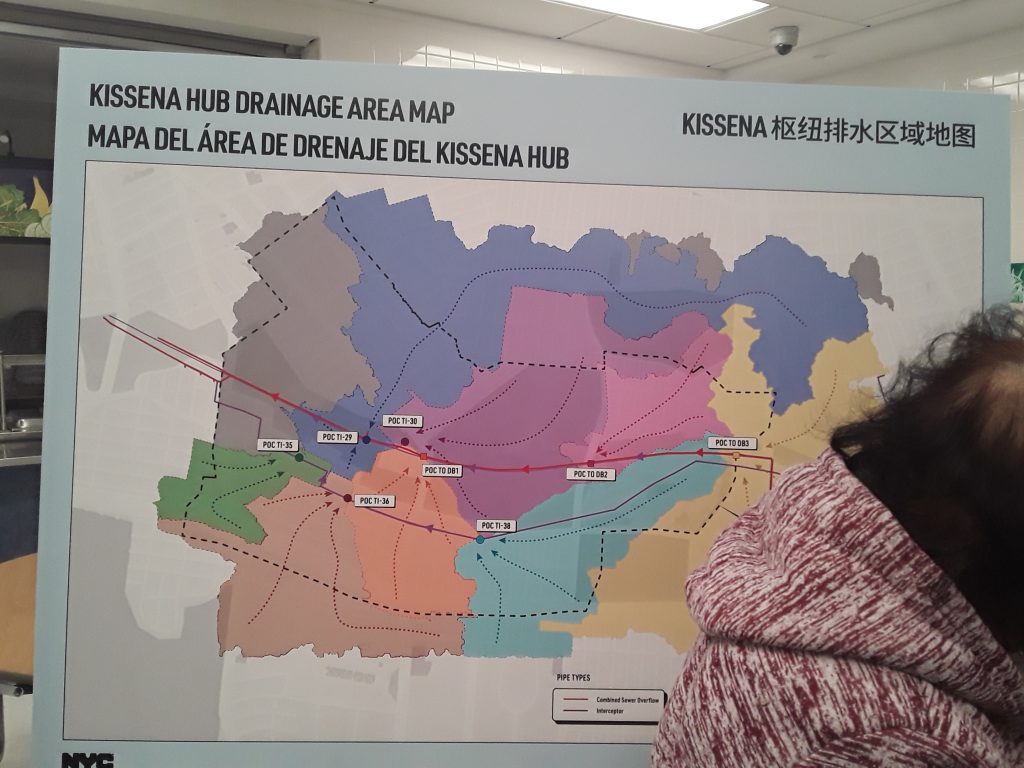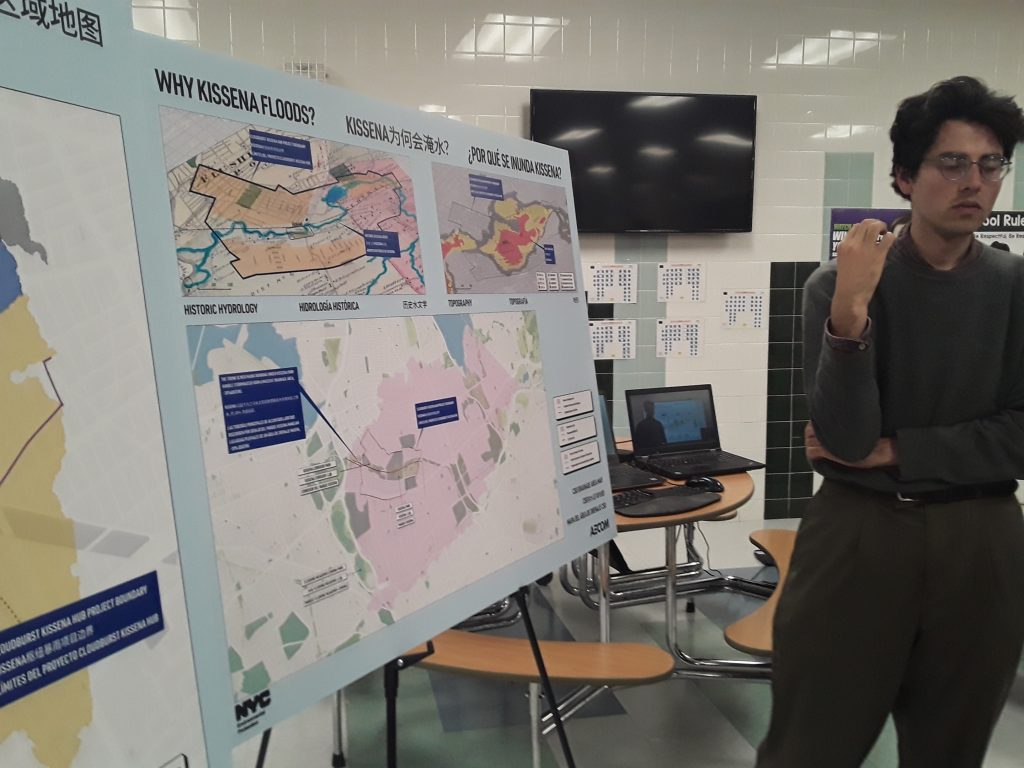
By Etta Badoe
It’s been a long time coming, but Kissena residents remain skeptical that the New York City Department of Environmental Protection’s (DEP) Cloudburst Project will solve their community’s severe flooding.
At a town hall meeting held at PS24 in Kissena on Oct 17, the DEP, along with New York City Emergency Management, and AECOM, the infrastructure consulting firm selected to design services for the project, hosted a series of events from video presentations to discussions, and even a board game. The goal? To highlight the benefits of the Cloudburst Project for the Kissena community and listen to community feedback. However, residents expressed concern that this was little more than a temporary solution to a problem that required a long-term fix.
“I appreciate they have a long-term view, but we need a solution now.” Dorothy Woo, a member of the Hollis Civic Association and a co-founder of the Kissena Corridor Park Conservancy, said. She has lived in Kissena since 1974. “The sewer was built in 1948 and even though the population increased, and housing increased, the sewer system remained the same. Woo explained. “So, people are suffering.”
The Cloudburst Project utilizes hubs designed to reduce flooding in high-risk neighborhoods during cloudburst events, sudden, intense rainstorms, which can cause severe flooding. By incorporating green (trees and rain gardens) and gray (sewers and underground storage tanks) infrastructure in a network of systems designed to absorb, store, and transfer excess stormwater, further strain on the current sewer system is avoided.
“This area has had a lot of flooding. We’ve seen with recent climate change that the rainfall happens really quickly and in a short amount of time and our sewers can’t really handle it.” Roopesh Joshi, Acting Assistant Commissioner of the NYCDEP said. “What we’re doing is providing the infrastructure, assets to absorb that water or detain it and keep it till that intense rainfall event has passed, and the sewer has more capacity to take all that.”
Katie, a consultant with AECOM, further added, “In the case that the sewer system does get overloaded it will also be connected to measures and it can backflow into these measures instead of flooding basements or streets.”

The project, which is still in the “visionary phase” and not expected to start construction until 2026, is partly funded by a $50 million grant from the Federal Emergency Management Agency’s (FEMA) Building Resilient Infrastructure and Communities (BRIC) Program and is estimated to cost $80 million. NYC Emergency Management not only helped support the application process and implement the grant. Their team attended the meeting to discuss the funding and advise attendees on emergency preparedness.
The need to increase surface and subsurface storage units to accommodate the cloudburst hubs will inevitably disrupt the area’s landscape. “We’re doing this work in the park and there’s going to be construction, and we have to excavate, but we want to put stuff back.” Mark, a landscape architect with AECOM explains. A board game not only provided attendees with a little fun for the evening but also allowed them to suggest improvements they wanted to see by placing cards on the board. “The community is looking for more pathways, more lighting, more site lines through the park” among other improvements and preservations.
Joshi says the response has mostly been positive. “They’re really happy we’re doing something about it” referring to the heavy flooding that has plagued the area for decades. But he acknowledges that while cloudburst hubs will be the solution for some communities, for others it might not. “This won’t resolve every flooding issue, but this is a good step forward.”
Still, residents doubt the Cloudburst Project will solve Kissena’s severe flooding issues.
“I don’t understand why they can build a sewer for Bay Side, College Point, Whitestone, why they can’t do the same for our neighborhood,” Minnie Zen, a community local said. “Storage is not a solution.”


